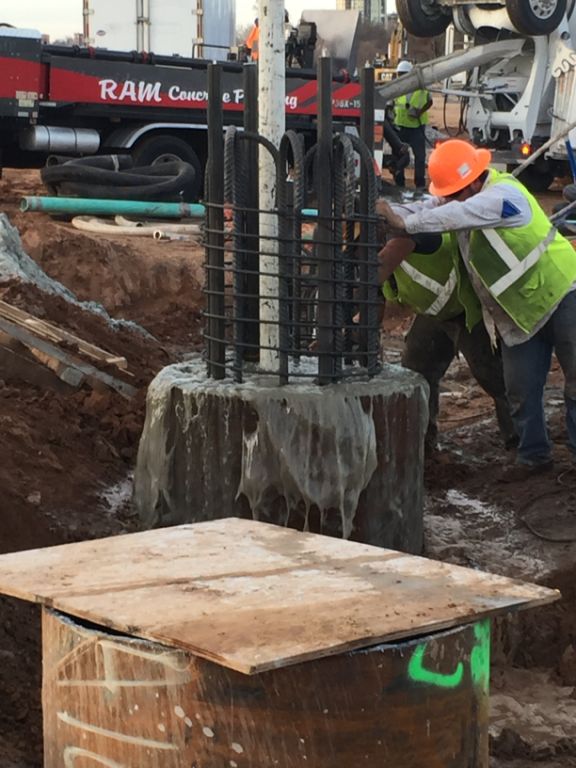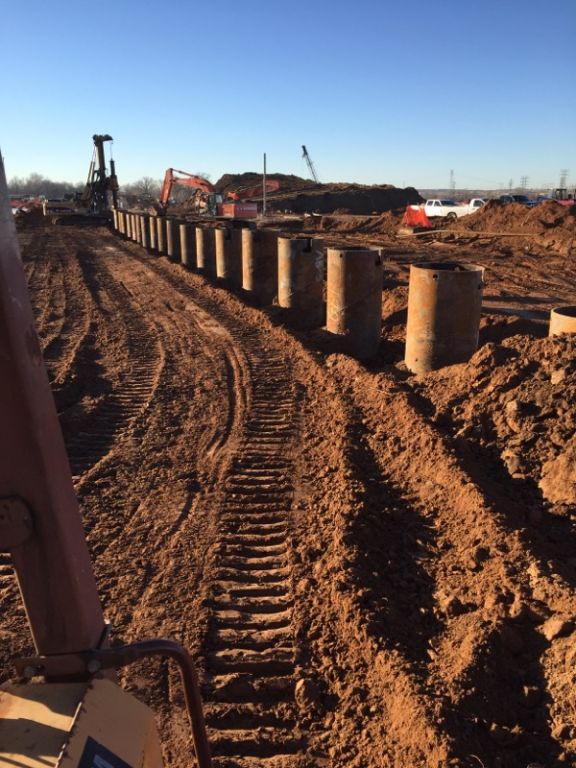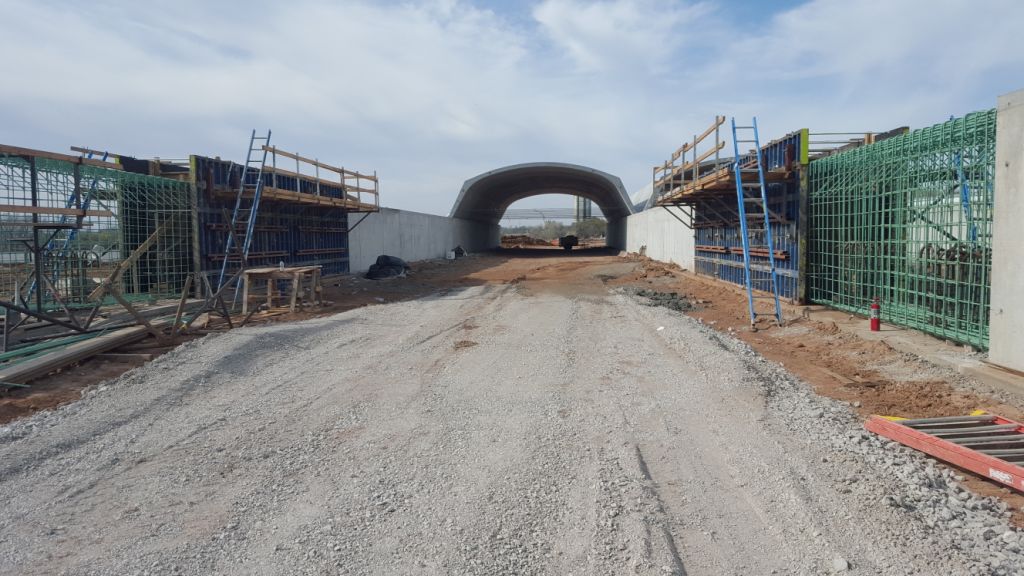Pillars of the Community: ORU Grads Contribute to World-Renowned City Park
 First things first: this story is about concrete. It's a foundational story, literally,
about one of the wonders of the modern world that we tend to take for granted. Specifically,
how tens of thousands of vehicles will traverse a bridge or overpass today, and how
we all just trust that those bridges and overpasses will support those vehicles.
First things first: this story is about concrete. It's a foundational story, literally,
about one of the wonders of the modern world that we tend to take for granted. Specifically,
how tens of thousands of vehicles will traverse a bridge or overpass today, and how
we all just trust that those bridges and overpasses will support those vehicles.
That doesn't happen by accident. It happens through meticulous and careful planning, through rigorous training, through a judicious application of knowledge and wisdom, and through some ORU alumni's well-reasoned gamble on themselves.
This story begins in 2014, when the George Kaiser Family Foundation broke ground on The Gathering Place, a new, 100-acre park for the city of Tulsa. Intended to transform a long-unused portion of land along The Arkansas River into a multipurpose park, The Gathering Place required an unprecedented level of engineering.
And as an additional challenge, the park would overlap with Riverside Drive, a well-traversed roadway that connects the southern part of Tulsa with its downtown. Gathering Place architects needed to construct an enormous land bridge to safely ferry pedestrians over Riverside's 27,000+ daily vehicles, and to do that, they needed a strong foundation of 181 pillars or, to use the more accurate industry term, "drill shafts".
The thing is: no one wanted to do the job.
"Honestly, we were the only ones who were willing to go for it," said Joshua Glesener, the Vice President of Operations at Paradigm Construction & Engineering, and a 2009 graduate of ORU's Mechanical Engineering program.
"It's a difficult process and no one wanted to touch it," said Glesener, "because there were 181 drill shafts, and all of them had to be cross-sonic tested. If you mess up on one of these, it can cost you anywhere between $15,000 and $30,000. The rate of failure is 10%, so if you look at that over 181 shafts, it can increase a lot of damages that you'd have to take over."
To the non-engineer, here's the challenge: a hole must be dug 35 feet into the ground. That hole must then be filled with concrete, and that concrete must have no air pockets or separation (meaning the gravel separates from the cement), otherwise the drill shaft won't hold the weight of the land bridge above it and will collapse.

"The best way to test that is to put tubes in a circular form throughout the shaft. And you test every length. On this particular job, we had four tubes sticking in it; they put probes in each one of the tubes to send signals to one another. If they hit a void or a separation, the signal will break or won't pass fast enough; so it's testing to make sure you have full concrete in your drill shaft."
So how does one make sure that 181 drill shafts can be completed without the exorbitant costs of redoing those that failed? Here's Sean Estes, Chief Engineer at Paradigm and 2009 ORU graduate:
"It was apparent when we started that it wasn't going to be something we could just jump into," Estes said. "It just required more planning and more meetings and more conversation, and very clearly understood procedures. From a managerial standpoint that helps people like Thomas, because they have a set of rules and everyone has a function and he knows exactly what's supposed to happen."
The "Thomas" Estes mentioned is Thomas Adams, the Project Engineer at Paradigm who oversaw the job site and 2015 ORU graduate.
Yes, 2015 graduate. Adams within six months went from walking across the stage at the Mabee Center to walking across a job site at a high-profile park with a budget in the hundreds of millions of dollars.
"It was a huge responsibility," said Adams, "but that was how I was able to concentrate only on the job. I learned a lot through it. We did a great job on it; it was just the legwork. I had three full notebooks of elevations and nothing but measurements and data on all the drill sites, and that was from months and months of being out there every day."
 How were these three men and their crews able to be so confident about a task with
such a low margin for error? All three men credit the education they received at Oral
Roberts University.
How were these three men and their crews able to be so confident about a task with
such a low margin for error? All three men credit the education they received at Oral
Roberts University.
"The engineering program at ORU really does a good job of fully encompassing everything," Adams said. "You're taking, in one semester, the mechanical engineering degree specifically. In another semester, you're taking a mechanical properties class, a fluid dynamics class, an electrical engineering class, and SEL—you're really getting a very broad day-to-day study curriculum. Having to be on top of all that, as well as all the homework and studying, it helps your time management skills and being efficient with your time."
"It was the process of going through the problem-solving and… the daunting challenge
of answering questions you really weren't necessarily told the answer to," Estes said.
"You come out of it being able to step back and analyze and formulate a plan and an
approach, or at least a decent guess, and then hash it out. And that's what comes
in handy."
"It's a really good engineering department run really well by [Dr. Dominic] Halsmer and [Dr. John] Matsson," Glesener said. "The group projects and everything you get to do in a four-year project is way more than any other university, at least from my experience. It's a different atmosphere. The group projects is the reason why I hire from ORU, because the team atmosphere they learn from those projects translates perfectly to the business of working in the industry."
As for The Gathering Place, those drill shafts that usually fail around 10% of the time? These ORU grads and their team got that down. Way down.
"We developed a system on how to do these shafts using our engineering degree and coming up with the procedure to limit the number of failed shafts," Glesener said." The job was slated to take six months to do all these, and we were one of the first job contractors on site, and we did it in four. And we only had two failed shafts rather than the [expected] norm of 18.
"I credit that to the problem-solving skills and critical thinking that we learned from our engineering degree at ORU."
"You just have to think about things more and refine your plans over and over again," Estes said. "It's a relief in this business to know there's more than one way to get something done, which was part of my learning process [at ORU]."
"Your years at college—you can make them what they are," Adams said. "You can choose not to engage and sometimes still get a good GPA, but if you engage and really understand that you're learning for not just ten years down the line, or even months, [then] it's an easy transition when you fully engage and actively learn in your senior year, your last semester. You never know when a big opportunity could come up."
That's a good foundation.

[all photographs courtesy Joshua Glesener and Paradigm Construction & Engineering]

